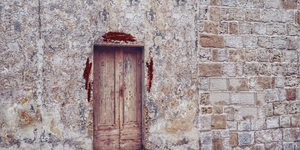Passover—the First of God’s Appointed Seasons
The eight-day festival of Passover began at sunset on April 12th. The Passover Seder is celebrated with a 15-part feast where the story of the Exodus from Egypt is retold. Families will read Psalms, sing songs and there will be Hebrew blessings recited.
The observances of the Passover Seder include several symbolic foods and rituals commemorating both the slavery in Egypt and the liberation of the Hebrews.
They include the following:
• Matzah (unleavened bread);
• Bitter herbs, usually horseradish, representing the bitterness of slavery;
• Charoset, an apple, nut, and spice mixture representing the mortar the Israelites used in building Egyptian structures;
• Salt water, representing the tears the Israelites shed due to enslavement;
• Shank bone of a lamb, representing both the first Passover lamb and the sacrificial lamb during the time of the Temple in Jerusalem;
• The afikoman, an additional portion of matzah eaten to commemorate the Passover offering; and
• Four glasses of wine, which symbolize God’s fourfold promise of deliverance from Egypt (Exodus 6:6-8)
After many decades of slavery to the Egyptian pharaohs, during which time the Israelites were subjected to backbreaking labor and unbearable horrors, God saw the people’s distress and sent Moses to Pharaoh with a message: “Send forth My people, so that they may serve Me.” But despite numerous warnings, Pharaoh refused to heed God’s command. God then sent upon Egypt ten devastating plagues, afflicting them and destroying everything from their livestock to their crops.
God visited the last of the ten plagues on the Egyptians, killing all their firstborn. While doing so, God spared the Children of Israel, “passing over” their homes—hence the name of the holiday, Passover. Pharaoh’s resistance was broken, and he virtually chased his former slaves out of the land. The Israelites left in such a hurry that the bread they baked as provisions for the way, did not have time to rise. Six hundred thousand adult males, plus many more women and children, left Egypt on that day, and began the trek to Mount Sinai and their birth as God’s chosen people.
The exodus of Israel in the Old Testament is an illustration of God’s salvation. The New Testament crucifixion was the ultimate exodus because it delivers not just from bondage of a controlling Pharaoh, but from bondage to sin itself. It provides for eternal life; not just life in an earthly promised land.
Just as the blood of the lamb on the doorposts saved the firstborn, it is Yeshua’s (Jesus’ Hebrew name) blood, the Lamb of God, who saves people today. He made atonement for our sins.
“For it is by grace you have been saved, through faith—and this is not from yourselves, it is the gift of God.” (Ephesians 2:8)
When we put our faith in Him, we symbolically apply the blood of the Passover Lamb by faith. Jesus gave us the assurance that the Lord will pass over us when He judges the world if we put our faith in Him and His atoning blood.
“I am the resurrection and the life. The one who believes in me will live, even though they die; and whoever lives by believing in me will never die” (John 11:25-26a).
Check back for more articles on Passover, including Passover recipes.


